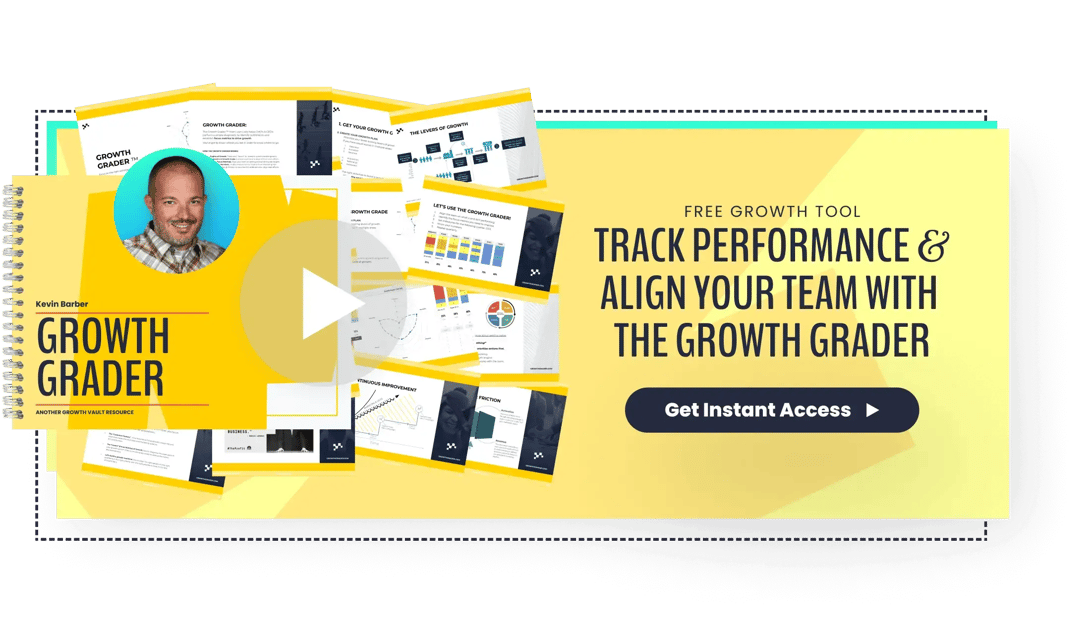-
1. Website Conversion Rate
-
2. Free Trial to Paid Conversion Rate
-
3. Customer Acquisition Cost (CAC) to Customer Lifetime Value (LTV) Ratio
-
4. Churn Rate
-
5. Expansion Revenue
-
6. Sales Cycle Length
-
7. Lead-to-Customer Conversion Rate
-
8. Customer Onboarding and Activation Rate
-
9. Net Promoter Score
-
Level Up Your B2B SaS Conversion Rate Benchmarks

B2B SaaS Conversion Rate Benchmarks Every Startup Founder Should Know
Conversion rates are the lifeblood of your business. This metric is the magic number that turns anonymous website visitors into leads and paying customers. But how can you tell if your conversion rates are up to snuff?
The good news is that, in the world of B2B SaaS, you’re not first! That means you get the gift of going second — you can study the benchmarks of the successful (and not-so-successful) startups that came before. Understanding B2B SaaS conversion rate benchmarks is the first step to leveling up your conversion rates and growing your business.
In this post, we’ll walk through nine conversion rate benchmarks every B2B SaaS startup founder should know. For each, we’ll talk about the metric, the benchmark, and give you expert tips on measuring and improving your metrics.Essential B2B SaaS Conversion Rate Benchmarks
Understanding conversion rates is critical for B2B SaaS companies, and here's why. Conversion rates provide a clear snapshot of how effectively you turn prospects into customers at different stages of their journey. These metrics shed light on your marketing and sales performance, whether it's getting someone to sign up for a free trial, request a demo, or purchase.
1. Website Conversion Rate
What is this metric all about?
Website conversion rate is a fundamental metric that reveals how effectively your website turns visitors into leads. Your site conversion rate reflects the percentage of website visitors who perform a desired action like signing up for a free trial, requesting a demo, or subscribing to a newsletter.
How can you calculate this metric?
To calculate the website conversion rate, divide the number of visitors who completed the desired action by the total number of website visitors during a specific period. Multiply the result by 100 to get the percentage.
Average:
The typical conversion rate for B2B SaaS websites falls between 2% and 5%. If your website consistently achieves this level, you're doing well.
High-performing:
Conversion rates exceeding 5% are generally considered excellent, especially for startups. It indicates that your website is effectively engaging and persuading visitors to take action, potentially leading to more sign-ups and conversions.
2. Free Trial to Paid Conversion Rate
What is this metric all about?
Your free trial to paid conversion rate measures the percentage of users transitioning from a free trial of your SaaS product to becoming paying customers. This metric is a critical indicator of how well your product aligns with customer needs and the effectiveness of your onboarding and sales processes.
How can you calculate this metric?
To calculate the free trial to paid conversion rate, divide the number of users who upgraded to a paid plan after a free trial by the total number of free trial users. Multiply the result by 100 to get the percentage.
Average:
Conversion rates from free trial users to paid customers can vary widely, but they often fall between 10% and 20%.
High-performing:
Conversion rates above 20% indicate that your product meets user expectations and your onboarding and sales strategies are highly effective. Achieving such rates is a sign of strong product-market fit.
3. Customer Acquisition Cost (CAC) to Customer Lifetime Value (LTV) Ratio
What is this metric all about?
Your CAC to LTV ratio assesses the balance between how much it costs to acquire a new customer and the value that customer brings throughout their lifetime. This metric helps determine the sustainability and profitability of your customer acquisition strategy.
How can you calculate this metric?
To calculate the CAC to LTV ratio, divide the cost of acquiring a customer (marketing and sales expenses) by the customer's lifetime value (the revenue generated from that customer over their entire relationship with your company).
Ideal:
The ideal scenario is to maintain a CAC to LTV ratio below 1. A ratio below 1 indicates that your customer acquisition costs are lower than the value customers bring, resulting in profitable growth.
Sustainable:
A ratio of 3:1 or better is considered sustainable for most SaaS companies. This means that for every $1 spent on customer acquisition, you're generating $3 or more in lifetime value.
4. Churn Rate
What is this metric all about?
Churn rate is a key metric that measures the percentage of customers who stop using your SaaS product during a specific period. Churn is a critical indicator of customer retention and the health of any subscription-based services you offer.
Related Read: 6 Customer Acquisition Challenges That Derail Most Companies
How can you calculate this metric?
To calculate the churn rate, divide the number of customers who have canceled or stopped using your product during a given time frame by the total number of customers at the start of that period. Multiply the result by 100 to express it as a percentage.
Ideal:
In B2B SaaS, a monthly churn rate of less than 5% is generally considered good for startups. This indicates that you're retaining a significant portion of your customer base.
High-performing:
Churn rates below 2% are excellent and indicate strong customer retention.
5. Expansion Revenue
What is this metric all about?
Expansion revenue measures the additional revenue generated from existing customers through upselling or cross-selling. This growth marketing metric reflects your ability to maximize revenue from your current customer base.
How can you calculate this metric?
To calculate expansion revenue, sum up the revenue generated from upselling or cross-selling activities to existing customers during a specific period.
A substantial portion of your revenue should come from upselling or cross-selling to existing customers. A benchmark of 20% to 30% or higher is considered healthy.
6. Sales Cycle Length
What is this metric all about?
Sales cycle length measures the average time from initial contact with a prospect to closing a deal. Cycle length data is essential for understanding the efficiency of your sales process.
How can you calculate this metric?
To calculate the sales cycle length, determine the average number of days or months to move a prospect through the entire sales process, from initial contact to closing the deal.
Average: B2B SaaS sales cycles can vary widely, but a typical benchmark is around 3 to 6 months. However, it's important to note that sales cycle length can be industry-specific, so benchmarking against peers in your industry is valuable.
7. Lead-to-Customer Conversion Rate
What is this metric all about?
Lead-to-customer conversion rate measures the percentage of leads that ultimately become paying customers. This metric indicates the effectiveness of your lead generation and nurturing efforts.
How can you calculate this metric?
To calculate the lead-to-customer conversion rate, divide the number of leads converted into paying customers by the total number of leads generated during a specific period. Multiply the result by 100 to express it as a percentage.
Average:
The average lead-to-customer conversion rate in B2B SaaS typically falls between 1% and 5%. This rate varies based on various factors, including the quality of leads and the effectiveness of lead nurturing.
High-performing:
Conversion rates above 5% indicate a highly efficient lead generation and nurturing process.
8. Customer Onboarding and Activation Rate
What is this metric all about?
Your customer onboarding and activation rate measures the percentage of trial users or new customers who complete key activation actions within a specified timeframe. It's a crucial metric for gauging how well customers adopt your product.
Related Read: The Ultimate Guide to SaaS Metrics For Massive Growth
How can you calculate this metric?
To calculate the customer onboarding and activation rate, divide the number of users who have completed essential activation actions (e.g., setting up their profile, completing a tutorial) within a specific time frame by the total number of users who signed up during that period. Multiply the result by 100 to express it as a percentage.
A high-performing benchmark aims for over 60% of trial users to complete key activation actions within the first week of signing up.
9. Net Promoter Score
What is this metric all about?
The Net Promoter Score (NPS) is a measure of customer loyalty and satisfaction. This survey asks customers how likely they are to recommend your product or service to others on a scale from 0 to 10.
How can you calculate this metric?
Calculate the NPS by subtracting the percentage of detractors (those who rate 0-6) from the percentage of promoters (those who rate 9-10). Passives (those who rate 7-8) are included in the calculation but have a less significant impact.
A high NPS (above 30) indicates satisfied customers likely to refer your product to others. It reflects strong customer advocacy and positive word-of-mouth potential.
Level Up Your B2B SaS Conversion Rate Benchmarks
Tracking the nine metrics mentioned in this post and understanding their benchmarks is critical to laying the foundation for success for your B2B SaaS startup. However, understanding metrics and benchmarks is only the first step in your journey to explosive growth!
If you want to unstick your business, scale reliably, and implement marketing strategies that pay for themselves, you need a playbook to success.
Our exclusive (and FREE) video series, the Growth Playbook, can provide you with all that and more! Steal our strategies for planning, budgeting for, and accelerating growth for your startup.
Check out the Growth Playbook for free today and start leveling up your startup!






